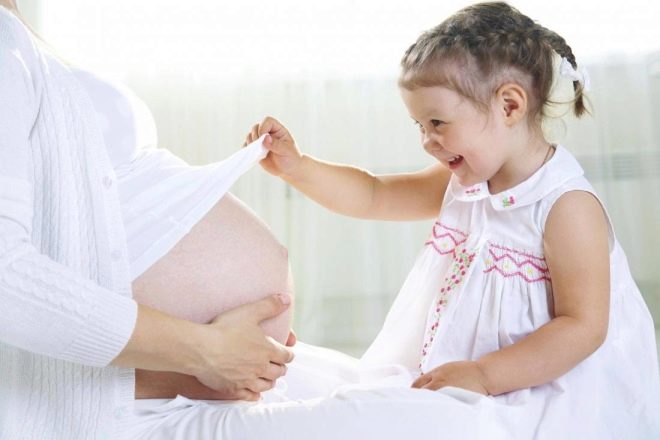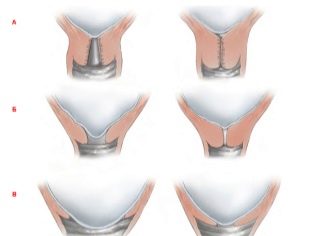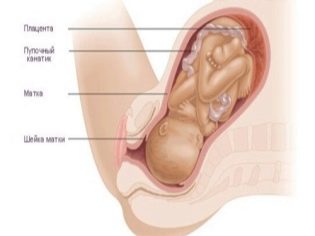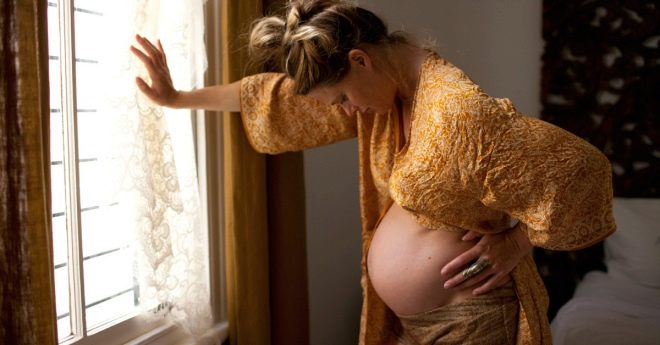How do contractions begin? Feelings and frequency
Women who are going to be mothers again or for the third or fourth time usually know the sensations that accompany labor pains. But sometimes they simply cannot identify them and distinguish them from training ones, since the contractions themselves during repeated births have their own distinctive features.
In this article we will tell you how contractions begin for multiparous people, when it is time to go to the hospital and how to alleviate the discomfort.
Repeated delivery - what are the differences?
During the second or third pregnancy, it is always much easier for women to understand the essence of the changes occurring in their body. Generic experience is an important acquisition that is not forgotten, even if the time interval between pregnancies is many years. Typically, these women do not have any panic at the appearance of false contractions, and they can quite easily understand that the precursors began to fight.
But it is necessary to take into account one important feature - training bouts during a second pregnancy begin much later than when waiting for the first child.
If the primiparous short uterine spasms, which are considered preparatory work of the reproductive organ of a woman before giving birth, sometimes begin after 20 weeks of gestation, then during second births you can count on false contractions only in the third trimester. Sometimes they do not occur at all, and only a few weeks before childbirth, light sensations of tension of the walls of the uterus may appear, which will appear periodically.
False contractions, or Braxton-Hicks contractions, with repeated pregnancy often start just a few days before giving birth and almost immediately pass into the category of forerunner contractions that take place against the background of pre-ripening cervix, its softening.
It is possible to explain such a late appearance of sensations by those physiological changes that occurred in the tissues of the uterus during the first pregnancy and childbirth. The uterine muscles during re-pregnancy are more stretched, elastic, the cervix is not as tight as in primiparous, and therefore the abdomen of the multiparagus grows somewhat faster, and many internal processes associated with preparing the body for the upcoming birth proceed less painfully generally imperceptible.
When the precursors reach their apogee (and this happens only a few days before the birth), theoretically some women begin to consciously feel them.
At the household level, this means that to prepare for childbirth, to collect the necessary things, documents, you need to be repeated in advance. Such a large amount of preparation time, which she had during the first birth, with a high degree of probability, would no longer be the second or third time.
Doctors usually recommend preparing everything necessary for childbirth from 36-37 weeks of gestation, and this will visibly facilitate the task of the woman in labor when the real true contractions begin.
Start
Training fights and precursors are never systematic and do not have periodicity.
Before birth, they occur spontaneously, moreover, they can return after half an hour or after a few hours, and this is considered to be completely normal.Much of the precursor sensation depends on how quickly the cervix prepares for the opening. The opening itself begins with the first labor contraction.
It can be distinguished from a false one precisely by its regularity, cyclicity, and a certain pattern.
Even if the precursory uterine contractions were mild or went unnoticed, it is difficult to confuse labor contractions with anything else. They always repeat in time, last a certain number of seconds and the breaks between them are gradually reduced, while the spasm itself becomes more protracted.
If a mucus plug has departed, this does not mean that a woman gives birth.
In primiparous, the stopper is usually separated from the cervical canal as the canal expands during cervical ripening 1–2 weeks before delivery or even earlier. With repeated births, the discharge of the stopper is a signal that it is possible to expect delivery within 1-3 days, or maybe in a few hours. You just need to carefully monitor their condition.
The very first contractions, the first signs of childbirth in the second pregnancy usually have a duration of 15-20 seconds with an interval of 30 minutes between them. Pain, as in the first birth, is observed in the back, lower back, followed by a transition to the abdominal cavity and lower abdomen. But it should be borne in mind that the pain itself in the second birth may be significantly more erased, smoothed out, and therefore the woman may not recognize the onset of labor.
In any case, you just need to correctly count the duration of contractions and note how many repeated contractions appeared. It is this pattern that should lead a woman to the idea that childbirth still begins.
Some multiparous assert that the very beginning of childbirth was not noticed at all. Even if it happened at night, do not worry. Nature has provided everything so that a woman does not oversleep an important point, and therefore when reinforcing contractions she will definitely wake up and be able to calculate their frequency.
At first birth, doctors recommend going to the maternity hospital, when rhythmic contractions of the uterus are repeated every 10 minutes.
It is necessary to take into account that during the second birth, all stages of labor activity proceed faster, and therefore it is better to come to the obstetric institution in advancewhen contractions are consistently repeated every 15 minutes.
If the first birth was a long time ago and the feeling was “forgotten”, you can take advantage of the achievements of modern technical progress.
Today, there are special application programs for smartphones that will calculate the contractions for you and determine for themselves whether it is childbirth or not, it's time to go to the hospital or a false alarm. You just need to start the application and mark the beginning of discomfort in the lower back or stomach, and then press each time, as soon as it seems to you that the spasm has recurred. Programs are freely available. Counter contractions - it is convenient and modern, but sometimes he makes mistakes, and therefore it is better to control his condition and independently.
Classic childbirth always begins with contractions. But if the water has withdrawn or blood discharge has appeared, this is also a signal of the onset of labor, however, complicated. Waiting for contractions in this case is not necessary. Immediately you should call an ambulance and go to the hospital as soon as possible.
Special features
The first phase of labor is the longest. It is called latent, as long as the generic features are hidden.
The cervix begins to open and should open up to 3-4 centimeters in about 7-8 hours. In primiparas this process takes much more time.
Considering that the very first sensations can be missed and overlooked, since the moment of the detection of contractions and their measurement, a multiple woman has about 3 hours to get to the hospital in full combat readiness.
There is no need to be frightened - pain in the latent period in the second or third labor is not as strong as the first time, and this is due to the elasticity of the cervix and uterus, as well as the best psychological readiness of the mother. The cervix is revealed better, it is not as tight and durable as in primiparas, disclosure happens faster and easier.
Already in the hospital a woman is waiting for the second phase of contractions - active contractions. The contractions become stronger, more frequent, and ultimately lead to the opening of the cervix up to 7 centimeters. In the second birth, this period lasts from one and a half to 3 hours.
The most painful and difficult fights are transitional. They are the final stage of fights and symbolize the "decisive breakthrough" to the attempts. In the second birth, such contractions last for a minute each and repeat every 1-3 minutes. The period is not simple, but usually short. Full disclosure of the cervix occurs most often within 15-30 minutes, and for primiparous this period can last up to one and a half hours.
No one knows how long the attempts will last, but usually at the second birth, the final expulsion of the fetus from the uterus takes a little - 10-30 minutes. However, the placenta may linger, and the last part of the birth of moms with experience lasts longer than that of first births.
If the second birth is easier than the first, and the numerous reviews of women confirm this, then the question of how safe they are is involuntarily. The probability of complications remains at the same level, experts say. Generic weakness, when contractions suddenly stop or become weak, of course, in multiparous people is less common, but the likelihood that the water will fall prematurely or the cervix is injured due to rupture of old scars increases.
The probability of birth trauma does not depend much on the number of births a woman has, but still it is less common in the second birth, as the woman usually imagines how to behave during the birth so as not to harm the baby.
Memo for giving birth again
- If the doctor recommends going to the hospital in advance, you do not need to refuse, especially given the high probability of fast and even rapid delivery. Even if you do not want to leave your first child, you need to understand that the second child is now more than anyone in need of prudent mother's behavior.
- If the pregnancy proceeded with pathologies, it is also necessary to go to the maternity hospital in advance. Pathologies of gestation are completely unpredictable in childbirth.
- When active contractions appear, you need to breathe correctly - take slow and deep breaths and even slower exhalations. This will allow you to relax muscles, relieve pain, because endorphins, which are produced in the body when saturated with oxygen due to deep breathing, have an excellent "side effect" - they pain relief.
- The postures for easier waiting for the bout to the multipliers are already familiar. A woman usually quickly discovers the position in which it is easier for her to move the pain of birth. Use the poses that helped you earlier, as well as massage and self-massage of the sacral area.
- It is possible to push only after the appropriate command of the midwife. Independent and unauthorized attempts can lead to multiple ruptures of the genital tract, cervix, birth trauma of the head and cervical spine of the baby.
- If there is a desire to empty the intestines, then the uterus is fully opened. It's time to call an obstetrician or doctor and move to rodzal. There is no need to wait and wait, since the birth process is shortened in time. And from the moment of the desire to go to the toilet, it can take only 10-20 minutes before the baby is born.
- A cry at birth takes away the strength of the woman and oxygen from the child. You can moan, you can sing, but you should not shout.
- All norms and terms, duration and duration specified in this article, as well as in any medical literature - are averaged. In each case, the periods may be longer or shorter.
Reviews
According to reviews of women in labor, sometimes it is not possible to recognize contractions, and women either arrive at the maternity hospital in advance, or already when there is no doubt, but by this point, those who already have a relatively large opening of the cervix have a few. The fact is that a pregnant woman intuitively awaits the appearance of the same sensations as the first time, and most often they are completely different.
Correction for the relative speed of each of the stages must be done.
Also, do not trust your sensitivity. Some mommies point out that even the pains were completely different and started not from the back, but from the small of the back.
And because only the correct measurement of the periodicity and cyclical nature of the repetition of sensations can help to sort out what is happening and in time to get to the hospital.
About the differences of the second birth from the first specialist in the next video.





























